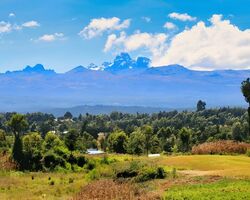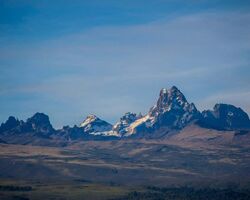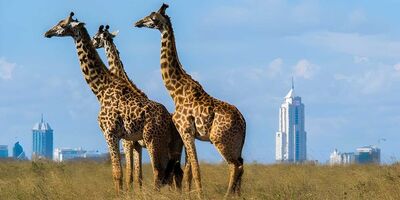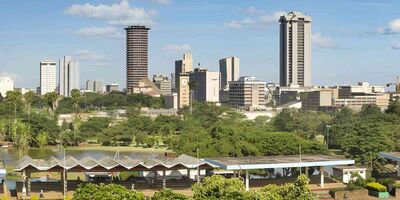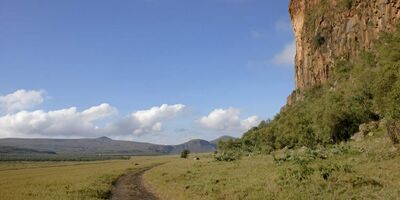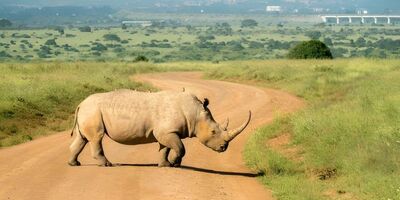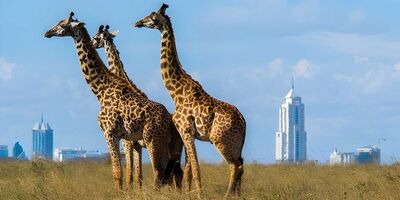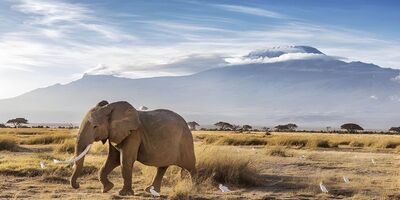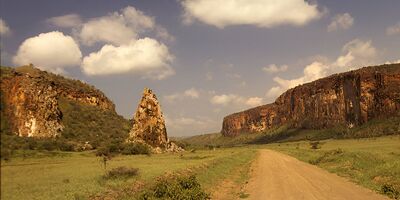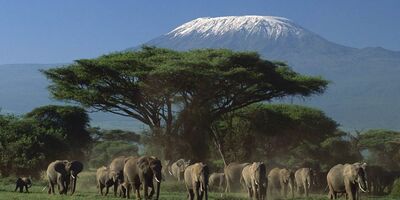Mount Kenya National Park , Nairobi
About Mount Kenya National Park
Mount Kenya National Park, located in central Kenya, is a majestic alpine wonderland and a UNESCO World Heritage Site known for its towering peaks, pristine glaciers, and diverse ecosystems. Mount Kenya, the second-highest mountain in Africa, offers a unique adventure for mountaineers, hikers, and nature enthusiasts. In this comprehensive travel guide, we'll delve into the enchanting experiences, conservation efforts, and practical tips for exploring Mount Kenya National Park.
Majestic Peaks and Glacial Landscapes
Mount Kenya boasts several distinct peaks, including Batian, Nelion, and Lenana, each offering breathtaking views and challenging climbs. Explore the park's glacial landscapes, ancient lava flows, and picturesque valleys as you trek through diverse habitats ranging from montane forests to alpine moorlands. The rugged beauty of Mount Kenya's terrain is a testament to its geological and natural significance.
Wildlife Encounters and Unique Species
While Mount Kenya is renowned for its mountaineering opportunities, it also harbors a rich diversity of wildlife adapted to its high-altitude habitats. Keep an eye out for elephants, buffaloes, giant forest hogs, and rare species such as the mountain bongo and giant mole rat. Birdwatchers will delight in spotting endemic species such as the Aberdare Cisticola and scarlet-tufted Malachite Sunbird.
Alpine Treks and Hiking Trails
Mount Kenya National Park offers a range of trekking routes and hiking trails suited for various skill levels and interests. Ascend to Point Lenana for panoramic views of the surrounding peaks and valleys, or challenge yourself with technical climbs to Batian and Nelion for a mountaineering adventure. Guided hikes and camping experiences allow you to immerse yourself in the park's natural beauty.
Accommodation Options and Mountain Lodges
The park features a selection of mountain lodges and camping sites catering to adventurers and nature enthusiasts. Stay at renowned lodges such as the Mountain Club of Kenya Hut or camp under the stars at designated campsites along the trekking routes. Enjoy hearty meals, warm hospitality, and stunning vistas of Mount Kenya's snow-capped peaks from your accommodation.
Conservation Initiatives and Park Management
Mount Kenya National Park is committed to conservation efforts aimed at preserving its unique biodiversity and natural heritage. Support sustainable tourism practices by adhering to park regulations, minimizing waste, and respecting wildlife habitats. Learn about ongoing research, reforestation projects, and community partnerships that contribute to Mount Kenya's ecological sustainability.
Best Time to Visit and Practical Tips
The best time to visit Mount Kenya National Park is during the dry seasons from January to February and July to September, when weather conditions are favorable for trekking and climbing. Here are some practical tips for planning your adventure:
- Fitness and Acclimatization: Prepare for high-altitude trekking by maintaining good physical fitness and allowing time for acclimatization.
- Equipment and Gear: Pack appropriate trekking gear, including sturdy hiking boots, warm clothing, rain gear, headlamp, first-aid kit, and essential mountaineering equipment if climbing higher peaks.
- Guides and Permits: Hire experienced guides and obtain necessary permits for trekking and climbing activities, ensuring safety and compliance with park regulations.
- Environmental Responsibility: Practice Leave No Trace principles, carry out your waste, avoid disturbing wildlife, and contribute to conservation efforts through responsible tourism practices.
Embrace the Alpine Adventure of Mount Kenya
In conclusion, Mount Kenya National Park offers an unparalleled alpine adventure that combines scenic beauty, wildlife encounters, and mountaineering challenges. Whether you're summiting Lenana for sunrise views or exploring the park's diverse ecosystems, Mount Kenya promises an unforgettable journey into East Africa's mountainous realm.
Plan your expedition to Mount Kenya National Park and embark on a thrilling adventure amidst glaciers, forests, and towering peaks.
Planning Your Climb to Mount Kenya
Climbing Mount Kenya is a rewarding adventure that offers breathtaking views, diverse ecosystems, and a sense of accomplishment. As the second-highest mountain in Africa, Mount Kenya presents a range of trekking and climbing routes suited for different skill levels and interests. In this comprehensive guide, we'll outline the essential steps and considerations for planning your climb to Mount Kenya.
Understanding Mount Kenya's Peaks and Routes (h2)
Mount Kenya features several distinct peaks, including Batian (the highest at 5,199 meters), Nelion, and Point Lenana (the most accessible at 4,985 meters). Choose a route based on your climbing experience, fitness level, and desired challenge:
- Sirimon Route: Known for its scenic beauty and gradual ascent, ideal for beginners and acclimatization.
- Chogoria Route: Offers diverse landscapes, including the stunning Gorges Valley and Temple area.
- Naro Moru Route: Known for its direct approach to Point Lenana, suitable for experienced climbers.
- Burguret Route: Less frequented, providing a secluded and challenging trek through pristine forests.
Preparing for Your Climb
Fitness and Training:
- Start a fitness regimen months before your climb, focusing on cardiovascular endurance, leg strength, and altitude fitness.
- Practice hiking on varied terrain, carrying a backpack with gradually increasing weight to simulate the climb's demands.
Gear and Equipment:
- Invest in quality trekking gear, including sturdy hiking boots, warm clothing (layers), rain gear, sleeping bag, and a backpack.
- Rent or purchase mountaineering equipment such as crampons, ice axe, harness, and helmet if attempting higher peaks.
Permits and Guides:
- Obtain necessary permits from the Kenya Wildlife Service (KWS) or licensed tour operators for park entry and climbing fees.
- Hire experienced guides and porters familiar with Mount Kenya's routes, safety protocols, and emergency procedures.
Planning Your Itinerary
Duration:
- Plan a multi-day itinerary based on your chosen route and climbing objectives.
- Allow sufficient time for acclimatization to prevent altitude-related issues.
Campsites:
- Identify designated campsites along your chosen route, including Shipton's Camp (Sirimon/Chogoria), Mackinder's Camp (Naro Moru), and Austrian Hut (Batian/Nelion).
Summit Attempt:
- Schedule your summit attempt during favorable weather conditions, typically early morning for clearer skies and better visibility.
- Follow a gradual ascent profile, allowing time for rest and acclimatization at high altitudes.
Safety and Health Considerations
Altitude Sickness:
- Recognize symptoms of altitude sickness (headache, nausea, dizziness) and descend if symptoms worsen.
- Stay hydrated, eat nutritious meals, and avoid alcohol and smoking during the climb.
Weather Conditions:
- Monitor weather forecasts and be prepared for sudden changes in mountain weather, including rain, snow, and cold temperatures.
- Dress in layers to regulate body temperature and protect against hypothermia.
Emergency Preparedness:
- Carry a first-aid kit, emergency communication device (such as a satellite phone or GPS tracker), and know the location of rescue stations along your route.
- Familiarize yourself with evacuation procedures and emergency contacts.
Environmental Responsibility
Leave No Trace:
- Practice Leave No Trace principles by carrying out all waste, including biodegradable items, and minimizing your impact on the environment.
- Respect wildlife and natural habitats, avoiding disturbances and littering.
Conservation Awareness:
- Learn about Mount Kenya's conservation efforts and support sustainable tourism practices that contribute to preserving the mountain's natural heritage.
2 Tours & Activities in Mount Kenya National Park
See All Mount Kenya National Park ToursLocation & Places to Visit on Mount Kenya National Park Map
View destinations and attractions nearby Mount Kenya National Park, on an interactive map.
Freedom to make your own trip!
What you want, when you want and how you want.



